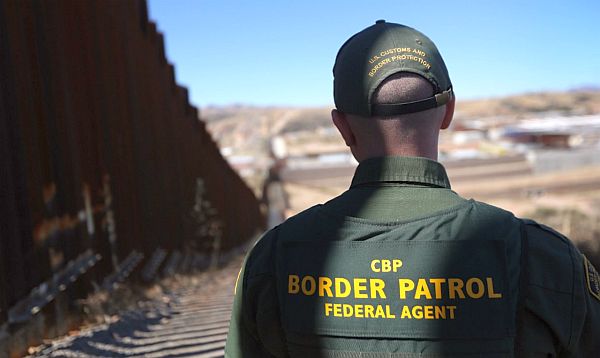Mexico City, Mexico — The chief of the US Border Patrol instructed his agents last Friday to seek cover from rock throwers along the southern border rather than shoot at them, and to take other steps to curb a spate of killings of migrants.
Border Patrol Chief Michael J. Fisher, under scrutiny from the Mexican government and US civil rights groups over the killings, also ordered agents not to put themselves in the paths of moving vehicles as a pretext for shooting at them.
Fisher’s directive came as the Department of Homeland Security made public its overarching policy on the use of deadly force after a decade of secrecy. The policy is intended to guide the actions of 21,700 Border Patrol agents, who constitute one of the largest US law enforcement agencies.
What difference the Border Patrol directive would make in the killings along the US Southwest border – where Border Patrol agents have slain 21 people since 2010 – is not clear. In essence, the order tells agents not to put themselves in perilous circumstances where they’d be forced to draw guns.
Fisher insisted, however, that his agents have not been too quick to fire.
"Border Patrol agents continue to show exemplary restraint and professionalism," Fisher wrote in a four-page memorandum for the agency’s personnel.
 |
Shawn Moran, the spokesman for the National Border Patrol Council, which acts as a union for Border Patrol agents, said his group was happy that the new rules didn’t restrict an agent’s ability to use force. He also said it was often difficult for Border Patrol agents to seek cover from rock throwers because supervisors sometimes posted the agents between the fence that marked the border and one several yards inside the United States.
"They often don’t have any recourse to seek cover," he said, describing the agents as "stuck between the border fence and the secondary fence, and they have no ready means of escape."
Fisher’s memo made no reference to the advisability of placing agents in a location where they, in Moran’s words, "have no choice but to defend themselves."
The American Civil Liberties Union, which has been critical of Border Patrol policies, said Fisher’s memo didn’t go far enough and it called on the agency to release a study undertaken by an independent law enforcement consulting agency known as the Police Executive Research Forum. That report is thought to have been highly critical of Border Patrol practices.
"Fisher’s new guidance . . . is largely a restatement of existing policy, which is a shame because clearly existing policy isn’t working," Chris Rickerd, the ACLU’s policy counsel in its Washington office, said in a statement. He called on the Obama administration to "initiate an independent inquiry into all cases" of deadly force in the last five years "so the public can understand why the nation’s largest law enforcement agency has been failing to follow best law enforcement practices in tactics, equipment, accountability, and training, with dozens of tragically fatal results."
In the memo, Fisher said agents were authorized to use lethal force against rock throwers if they thought that "based on the totality of the circumstances, to include the size and nature of the projectiles, that the subject of such force poses an imminent danger of death or serious injury."
But he added that agents should "obtain a tactical advantage in these situations, such as seeking cover or distancing themselves from the immediate area of danger."
Asked how many agents in recent years have been disciplined for exceeding use-of-force regulations, Fisher said, "I don’t have the answer to that right now."
Nor could Fisher say how many times Border Patrol agents have sought to block a moving vehicle as a reason to fire on its occupants.
The new directive tells agents that they "should not place themselves in the path of a moving vehicle or use their body to block a vehicle’s path."
Mexico’s Secretariat of Foreign Relations issued statements after each of two killings of Mexican migrants this year that said it was "profoundly concerned" about what it saw as a disproportionate use of force by US Border Patrol agents.
 |
In another case on February 18th, a United States Border Patrol agent shot and killed a migrant along a mountain trail in Otay Mesa, California, who he said had pelted him with rocks, one of which hit him in the face.
No witnesses have emerged to corroborate either agent’s claims.
Previous cases that have drawn attention involved Border Patrol agents who’d slain teenagers who were tossing rocks while standing on Mexican soil.
In January 2011, a Border Patrol agent shot across the fence and killed 17-year-old Ramses Barron-Torres in Nogales, Mexico. In October 2012, an agent shot 16-year-old Jose Antonio Elena Rodriguez repeatedly in the back while he was on a street in the same city. US investigators declined to prosecute the agents involved, saying in part that they lacked jurisdiction because the victims had died on foreign soil.
Meanwhile, the Senate confirmed White House drug czar Gil Kerlikowske on Thursday as the next commissioner for the umbrella agency over the Border Patrol, Customs, and Border Protection. Kerlikowske becomes the first Senate-confirmed commissioner since 2009.
Kerlikowske reports to Department of Homeland Security Secretary Jeh Johnson, who’s been in his own job less than three months. Johnson said in a statement Friday that he was pleased that two agencies within DHS – Customs and Border Protection, and Immigration and Customs Enforcement – were releasing their use-of-force policies after years of silence.
Johnson said the new Border Patrol directive would "lessen the likelihood of deadly force situations as we meet our dual goals of ensuring the safety and security of our dedicated agents as well as the public that they serve."
Original Story


